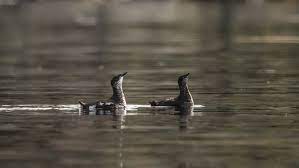Known to bird watchers as a “strange, mysterious little seabird,” the marbled murrelet deposits a single egg in the thick mosses that grow on the branches of British Columbia’s old-growth forest canopy during nesting season.
The little seabird with mottling in shades of black and brown is also regarded as vulnerable since logging is threatening some of those woods.
According to a recent UN assessment, the marbled murrelet is one of an increasing number of migratory species animals facing a dangerous future.
“Habitat protection is the solution for the Marbled Murrelet and for many other migratory species,” stated Shelley Luce, the Sierra Club’s campaign director.
“Loss of habitat is one of the biggest drivers — in many cases the biggest driver — for species loss.”
According to a United Nations conservation group’s assessment on the condition of migratory species worldwide, which was released on Monday, these animals—which can include fish, birds, and butterflies—are facing more dangers than ever before.
The majority of fish (97%), according to the group’s tracking, are declining in number, and the situation for birds is also dire.
Overall, 44% of the species on the group’s list are experiencing population declines, and more than one in five of the species are under threat of going extinct.
In addition to habitat loss, the survey revealed that migratory species are facing greater challenges to survival due to other human-caused factors such pollution, over-exploitation, and climate change.






